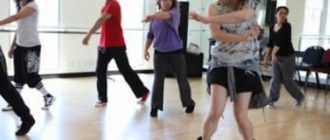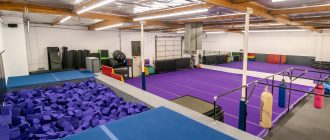- Taking Class
- Class in Brief
Hip Hip Groove
Taking Class
Isaac Tualaulelei offers dancers in his Hip Hop Groove class the chance to get in touch with an element of dance that he believes is essential. Isaac’s choreography jumps around stylistically, his musical selections span genres, and his class has no set level. But the one thing you can count on a groove.
“I’ll give you different elements here and there,” says Isaac. “But I stay true to that groove and I hold onto it because it’s the most important thing, I feel, with dance.”
Class Communication
Hip Hop Groove is challenging, and class members say they appreciate Isaac’s patient teaching and the clear way he breaks down moves. He responds to the energy of the class, they say, sensing when to take more questions and when to push his students.
“I stay true to that groove and I hold ontoit.”
On a visit we noticed that he took his time, reviewing timing and coordination of arms and feet in the first couple of eight counts of the routine until people were catching on.
About ten minutes into the choreography, Isaac paused and said he always asks people to speak up. He’d rather they do two or three eight counts, but really learn, he said, than to cover a lot and leave class with a headache. The group had started out quiet, but after that people were more responsive to his queries and assertive in asking questions.
Timing and Musicality
Teaching a routine with a lot of musicality, Isaac used counts and sound cues consistent with the music, not leaving a lot of silences to fill in. He marked the routine to each separately, seeming to avoid the common pitfall of saying “Let’s count it” and then switching to sound effects right at the tricky part where people need the counts.
Isaac, says Miguel Antonio, “really helps the students to understand the music and movement.”
And because he loves to see how other people interpret music, Isaac usually leaves a couple of “do you“counts in a routine.
Most of the corrections Isaac gave in class related to timing. He also wanted the dancers to keep their lines clean and to be more subtle in performing a couple of moves.
The routine wasn’t fast, but the musicality was intricate. People were working hard throughout class, and Isaac was excited to see the routine come together at the end.
Performance
Near the end of class, Isaac split the room in half and gave each group a low-key turn to perform the routine. Then he called each group up to sit in front of the mirror and support the other as they performed. He also gave the men’s and ladies’ groups turns.
The class was pretty vocal, and it was great to see dancers encouraging each other and cheering each other on.
In groups, Isaac says, people can get used to performing without the pressure of being on stage. Take the opportunity to experiment, he suggests. Look in the mirror. Play with character and personality. Isaac may also offer direction, giving corrections on aspects of performance such as interpretation, energy, and face.
After the ladies performed for the first time, he encouraged the group to interpret the dance more seductively.
“Maybe with your eyes,” he said, framing one eye between his fingers.
Finally, everyone did the dance together again to end class. It took a keen sense of musicality to execute the intricate phrasing in this routine, but the dancers in Isaac’s class were a pleasure to watch.
Hip Hop Groove
Class in Brief
Isaac Tualaulelei’s Hip Hop Groove is designed for the dancer who wants to train and be challenged. You never know just what you’ll get when you walk in—only that you’re about to groove!
Though the class has no set level, most of Isaac’s routines are advanced. Class members say they appreciate his patient teaching and the clear way he breaks down moves. Isaac feels strongly that class members should have something to take away with them, and he tries not to teach more material in a class than the students can master. He also likes dancers to speak up and let him know what they need.
Performance is a focus in Hip Hop Groove, and Isaac encourages dancers to use groups as an opportunity to play with character and personality. At the same time, he believes it’s important for dancers to be able to take direction from a choreographer, and he may give corrections on aspects of performance such as interpretation, energy, and face.




